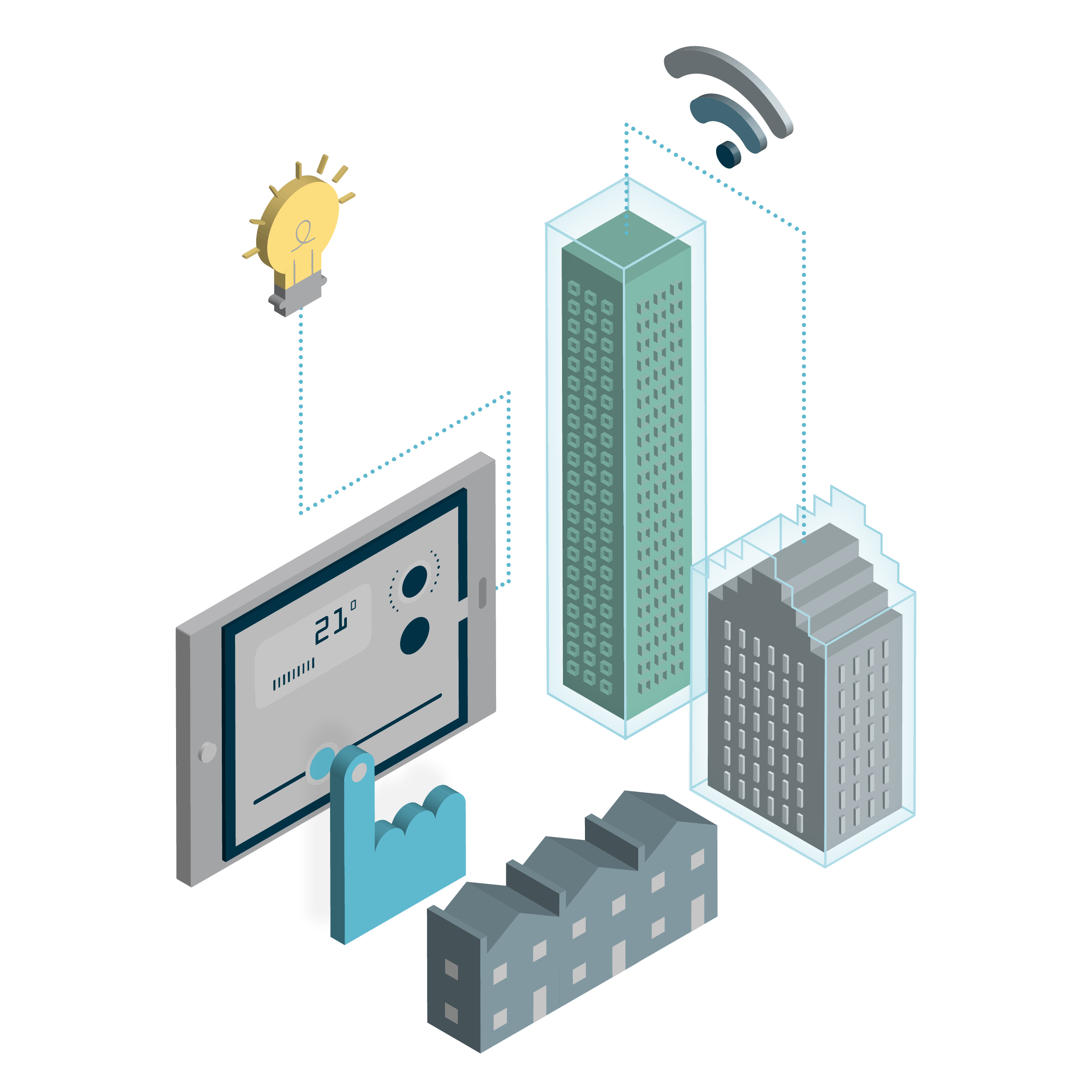Planning policy plays gatekeeper role in delivering smart, sustainable and collaborative cities
Published on 26th April 2021
Our series exploring how buildings can contribute to the 'smartness' of the city environment concludes with a look at the crucial role of planning policy

There are a range of ways in which individual buildings can contribute to the "smartness" – whether digital, sustainable or collaborative – of their wider urban environment and generate benefits for the wider community. Turning this potential into reality in the built environment depends heavily on planning policy and decision-making – planning is the gatekeeper for physical innovation. With planning policy in the UK currently under review (the government's response to the consultation on its August 2020 white paper "Planning for the future" is still awaited), there is an opportunity to make sure these objectives are integrated into planning policy.
A new approach to community gains?
Planning permission is subject to national legislation and policy but decisions are taken at the local level. The "material considerations" to be taken into account in reaching planning decisions are set by national and local policy, with local policy being embodied in an area's Local Plan. Mechanisms are integrated into the planning process in the UK to make sure that developments generate community benefits, or to ensure that a particular approach is followed to the design of buildings and related infrastructure. Accordingly, whether ambitions can be achieved for what a building could deliver, or how it could contribute to the wider smartness of an urban environment, will often boil down to whether it aligns with (or can be brought within) the priorities set in the Local Plan – particularly the stated priorities as regards community gains from development.
Ultimately, the objectives of generating digital smartness and wider community and environmental benefits, need to be built into planning policy through national legislation or district councils' Local Plans. Some councils are already moving in this direction and the road to net zero is certainly woven throughout government policy. But realising a vision of smart, sustainable, collaborative cities may still require lobbying at the national or local level, explaining the upside and benefit of this approach and securing local government buy-in. In short, to maximise benefits, the Local Plan would need to set out what needs to be done, and make provision for how it is to be achieved.
Data as a benefit
Generally speaking, digitalisation-focused objectives and delivering community benefits from data generated by buildings do not currently feature in Local Plans. Planning priorities around the benefits that can be generated from a development tend to be physical (such as building a new school or new community facilities for the additional population from a major residential development) or financial (such as a contribution to library funding or public transport costs). Intangible benefits drawn from the value of the data from a development are much less commonly understood. For example, a building or estate might commit to sharing data with the local authority to support traffic management or water and waste management. Perhaps as part of an obligation for community facilities, a developer might commit to sharing data about the availability of rentable space within a community building on a local community app.
Although issues such as delivering strong digital connectivity are being worked into planning policy, at national and local level, and some local authorities are being forward thinking in relation to changes in mobility etc., incorporating the delivery of digital smartness into the planning process is an area that planning policy has not yet engaged with, and the potential of data as a currency is not yet widely recognised.
Greenness and sustainability
While digitalisation may not feature greatly in planning, sustainability has a central consideration in policy and decision-making for some time, including requirements such as sustainable drainage systems (SuDS), integration of local transport and travel planning, and limiting provision for car parking spaces. These policies could go further – for example, modern methods of construction can enhance sustainability and the flexibility of a building as well as reducing costs – on a residential development, for example, this could release funding for a larger proportion of affordable housing.
The interface between sustainability and wellness is also moving up the agenda, designing areas where cycling to work, school or the shops is a viable alternative to driving, and shaping infrastructure to support wellbeing and healthy lifestyles. As part of this trend, "garden city" concepts are seeing a return in many areas, with sustainability and aesthetics coming strongly into design codes – the white paper discusses "planning for beautiful and sustainable places". Large developments are being created with "village hubs" to create smaller, local community centres, rather than being zoned for separate residential, retail, business areas, etc.
Again, these ambitions have the best chance of being realised if they are worked into Local Plans. Other examples might include a requirement to use sustainable waste management techniques, or sustainable heating technology for buildings, or to include the necessary electrical infrastructure for fast charging of electric vehicles.
| Interested in hearing more from Osborne Clarke? Register now for more insights, news and events from across Osborne Clarke |
Enabling mixed use and zoning
Much of the discussion in this series has focused on opening up real estate to a broader group of occupants and users – such as office space that is used by a community group in the evening, or catering facilities made available for use as a dark kitchen after office hours. We also discussed how there needs to be a mixture of uses and activities in the surrounding area for buildings to be used in this way. In a business district, it might be difficult to find a community group interested in using a large meeting room in the evening.
Again, planning operates as a gatekeeper. What a building is used for and the mix of uses within a particular urban area are both governed by the planning permission regime, with specific permissions granted for statutorily defined use categories. Moreover, developers will have more reason to embrace this collaborative approach if community gains of this nature are included as objectives in Local Plans. Developers are then incentivised to shape their proposals around delivery of those benefits, knowing that they will be favourably received.
Planning policy also impacts on the ability of a building to deliver community benefits at the level of zoning areas of an urban environment – as noted, a broad mix of activity and building types within a particular urban area is likely to support collaboration and community use much better than a city that is sliced up into distinct areas. Again, this approach needs to be worked into Local Plans to ensure that it flows into decision-making and therefore also into the design of developments.
Rethinking planning policy?
A smart city (or indeed a smart town, or smart village) does not have an end point but is an ongoing, evolving concept. Planning policy needs to keep up with these shifts and evolve alongside the urban landscape it is overseeing.
Planning ambitions and priorities in the UK are currently being reset for the future, following the government's white paper, offering a timely opportunity to ensure that the concept of good urban design includes delivering digital infrastructure, provision for sustainable energy, the promotion of healthy lifestyles, sustainable transport options, and supports a collaborative approach to the use of our built environment, for the benefit of the community that occupies and uses it.
From this top level of policy, the philosophy would filter down into Local Plans. They might include details about the types of digital, sustainable and collaborative community gains to be delivered by development. They might also envisage adjustments to land use constraints to enabled mixed, multiple or layered use of a building or an urban area, the interaction with affordable housing needs, provision to allow heat networks, promotion of 5G infrastructure build-out, and so on – there is a great deal that could be done.
Ultimately, forward-thinking planning decision-makers will need to take measured risks with pioneers in order to demonstrate the value of innovations and to start to shift assumptions.
This infographic summarises our approach to smart cities. If you would like to discuss any of the issues raised in this article or in our infographic, please contact one of the authors or your usual Osborne Clarke contact.







